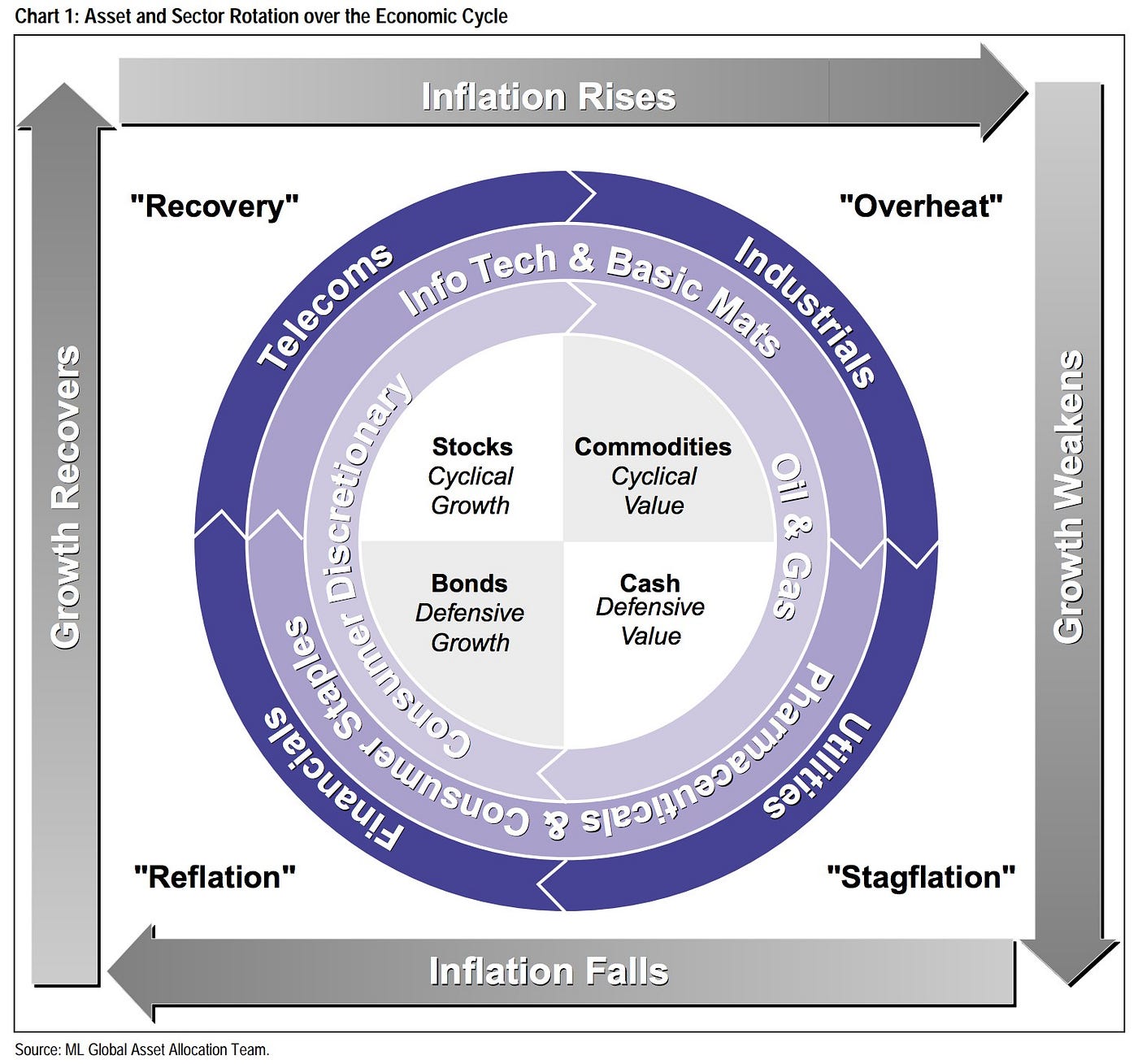The line chart below shows the relationship between US Dollar Index and Commodity Price Index.
The dynamic macroeconomic condition of the world drives me to find the correlations among some macroeconomic indices.
Rising Energy Price and Commodity Price
The tight relationship between Russia and Ukraine (and NATO) and the pandemic drive energy price such as crude oil and gas keep increasing. On one hand, I may consider the rising energy price as mainly a supply-side problem. Although European countries conduct sanctions on Russia, they still have relative rigid demand for gas and crude oil from Russia. The lack of energy from the EU pushes the oil price to rise as the Green Line shows in the Figure below. On the other hand, the tight Global relationships between huge parties such as Russia, US, the EU, and China enhance the needs of necessities. Therefore, the prices of commodities and oil, which are necessities not only for the downstream consumers but also for industries, increase as expected.
Those facts that positive correlation of commodity price, energy price, and crude oil price can be found in the Figure below.
US Dollar Index and Commodity Price
Intuitively,
As the US dollar is internationally admitted and exchanged currency, commodities and crude oils are priced by it (the US Dollar).
As shown in the Figure below, there seems a negative correlation between the US dollar index and the Commodity index.
One explanation of that negative relationship is that the value or the intrinsic value of a commodity is the same either priced by the US dollar or price by the British pound. Therefore, if the US dollar depreciates, then people should spend more US dollars to buy the same certain quantity of commodities. Similar logic could be found in crude oil prices.
There could be other explanations or other factors that could be taken into consideration. Under the current world condition that de-globalisation and uncertainty emerge, people would hold more safe assets. Thus, commodities and old, which are necessities, and gold, which is a generally accepted symbol of value, become the top safety consideration for people (investors and firms may have greater demand for commodities and energy, and normal people may get access to gold and have more demand for gold). Finally, the price of them increases.
However, there raises a question I haven’t yet spent time on studying it.
If the US dollar appreciates, then the price of commodity should decrease as I just introduced. Then, there might be more demand for commodities and oil as the price is getting low (you may say the low price is due to the appreciation of the US dollar. you are right maybe, but that cannot convince me), at least in the U.S. market. As the transaction is made with the US dollar, the more demand for commodities and oils means more demand for the US dollar, therefore US dollar should keep appreicating. Is that right? If it is, then there won’t be a convergence and won’t have an equilibrium, instead, the appreciation of the US dollar would be magnified. The reverse situation would happen if the US dollar depreciates.
Emerpically,
The Fred commission announced to increase the interest rate, in order to face the hyper-inflation resulting from its previous quantitative easing. Increasing interest rate means the US market would be more attractive to Global investors, so an increase in demand for the US dollar drives the US dollar to appreciate. The commodity price logically should go down. However, that divergence does not come out as we can find in the figure since the tight relationship between Russia and Ukraine happened.
Why the empirical finding contradicts with our logical indication?
Is that a result of the safety consideration (that people worry about the war and start to hold necessities) we just mentioned? If it is, then how can we split that part of the effect and show the negative correlation between the US dollar and commodity price. If not, then what factors contribute to the conflict? Is that due to the reason I discussed above? or there are any other factors (of course there are, but I neglect them because they have relatively small effects) cause that phenomenon?
Crisis
In the second figure, the crisis happened in 2008 and 2019-now, as shown in the shaded period. In the crisis, the commodity price seems a leading index of the US dollar. The commodity reflects prior to the other economic factors, as demanders of the commodity, production firms, need to avoid fluctuations of prices. So they make hedging transactions earlier and predict the commodity price so that they can apply to their production process smoothly.

